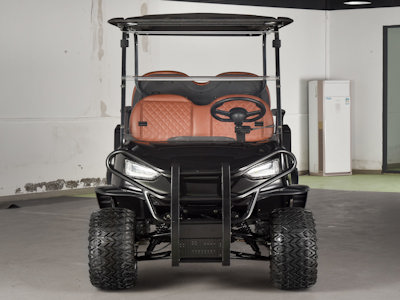- Почтовый ящик:
- 1388xx888xx@gmail.com
- Телефон:
- 1388xx888xx
- Мобильные телефоны:
- 1388xx888xx
- Связь:
- Shawn
- Адрес:
- No. 17, Fengying Road, Taiping Town, Guangzhou, Guangdong, China

В эпоху стремительного развития электромобилей подвеска становится ключевым элементом, определяющим не только комфорт и безопасность, но и общую эффективность транспортных средств. Традиционные системы подвески, основанные на механических принципах, уступают место инновационным решениям, интегрирующим электронику, искусственный интеллект и передовые материалы. Эта статья исследует, как электромобильная подвеска будущего уже становится реальностью, трансформируя автомобильную индустрию и предлагая водителям беспрецедентный опыт вождения.
Введение: почему подвеска важна для электромобилей
Электромобили (ЭМ) кардинально отличаются от автомобилей с двигателями внутреннего сгорания (ДВС) по своей архитектуре. Отсутствие крупного двигателя, батарейные блоки, расположенные в нижней части кузова, и электродвигатели, интегрированные в оси, создают уникальные вызовы и возможности для подвески. Подвеска не только поглощает неровности дороги, но и влияет на динамику управления, энергоэффективность и долговечность компонентов. В электромобилях, где вес батареи может составлять значительную часть общей массы, оптимизация подвески становится критически важной для обеспечения стабильности и减少 износа.
Исторически, подвески развивались от простых рессорных систем к сложным независимым конструкциям с амортизаторами и пружинами. Однако с появлением электромобилей инженеры начали экспериментировать с адаптивными и активными системами, которые могут dynamically adjust to road conditions and driver preferences. This evolution is driven by advancements in sensor technology, computing power, and materials science, making the future of suspension not just a concept, but a tangible reality available in today's vehicles.
Технологические инновации в электромобильной подвеске
Современные электромобили оснащаются подвесками, которые leverage cutting-edge technologies to enhance performance. Key innovations include adaptive damping systems, air suspension, and electromagnetic or hydraulic active systems. For example, Tesla's Model S and X feature an adaptive air suspension that automatically adjusts ride height based on speed and road conditions, improving aerodynamics and comfort. Similarly, companies like Porsche with the Taycan incorporate active anti-roll bars that use electric motors to counteract body roll during cornering, providing a sportier driving experience without sacrificing comfort.
Another breakthrough is the use of predictive suspension systems that utilize cameras and sensors to scan the road ahead. By analyzing upcoming terrain, these systems can preemptively adjust damping forces, ensuring a smooth ride even on rough surfaces. This technology, often integrated with autonomous driving features, represents a significant step towards fully intelligent vehicles. Moreover, the integration of energy recovery systems in suspension, such as regenerative shock absorbers, allows to harvest kinetic energy from road vibrations, contributing to the overall efficiency of the electric vehicle.
Влияние на комфорт и безопасность
Инновационная подвеска напрямую impacts driver and passenger comfort by minimizing vibrations, noise, and harshness (NVH). In electric vehicles, where cabin quietness is a hallmark, a well-tuned suspension is essential to isolate occupants from road imperfections. Adaptive systems can switch between comfort and sport modes in real-time, catering to different driving scenarios—whether it's a leisurely cruise or aggressive maneuvering. This versatility enhances the overall user experience, making electric cars more appealing to a broad audience.
Safety is another critical aspect. Advanced suspension systems improve vehicle stability, reduce the risk of rollovers, and enhance traction control. By actively managing weight distribution and body movements, these systems help maintain optimal contact with the road, especially in adverse weather conditions. For instance, during emergency braking or evasive maneuvers, an active suspension can distribute forces evenly, preventing loss of control. This is particularly important for electric vehicles, which often have a lower center of gravity due to battery placement but can still be prone to dynamic issues if not properly managed.
Экономические и экологические аспекты
Разработка и внедрение передовой подвески involve significant costs, but they offer long-term economic benefits. For manufacturers, investing in suspension technology can differentiate their products in a competitive market, commanding premium prices. For consumers, improved efficiency translates to lower energy consumption and reduced maintenance costs over the vehicle's lifespan. For example, regenerative suspension systems can extend driving range by converting otherwise wasted energy into electricity, aligning with the sustainability goals of electric mobility.
From an environmental perspective, advanced suspensions contribute to reducing the carbon footprint of transportation. By enhancing aerodynamics and reducing rolling resistance, they help maximize the efficiency of electric powertrains. Additionally, the use of lightweight materials like aluminum and composites in suspension components decreases overall vehicle weight, further improving energy economy. As regulations tighten on emissions and efficiency, such innovations become essential for compliance and corporate responsibility.
Будущие тенденции и вызовы
Будущее электромобильной подвески promises even greater integration with digital technologies. The advent of vehicle-to-everything (V2X) communication will enable suspensions to receive real-time data from infrastructure and other vehicles, allowing for proactive adjustments. For instance, if a road has potholes ahead, the suspension could soften in anticipation, providing a seamless ride. Artificial intelligence will play a pivotal role in learning driver habits and optimizing suspension settings personalized to individual preferences.
However, challenges remain, such as the high cost of advanced systems, which may limit accessibility to mass-market vehicles. There are also technical hurdles related to reliability and durability under extreme conditions. Cybersecurity is another concern, as connected suspensions could be vulnerable to hacking. Addressing these issues will require collaboration between automakers, suppliers, and regulators to ensure that the benefits of future suspension technologies are realized safely and affordably.
Заключение
Электромобильная подвеска будущего уже не является утопией; она активно внедряется в современные транспортные средства, revolutionizing the driving experience. Through adaptive, active, and intelligent systems, it enhances comfort, safety, and efficiency, while supporting the broader transition to sustainable mobility. As technology continues to evolve, we can expect even more groundbreaking developments that will further blur the line between human and machine interaction on the road. The journey towards perfect suspension is ongoing, but the progress made today clearly indicates that the future is indeed here.

